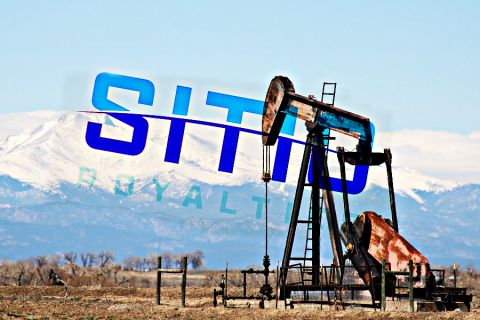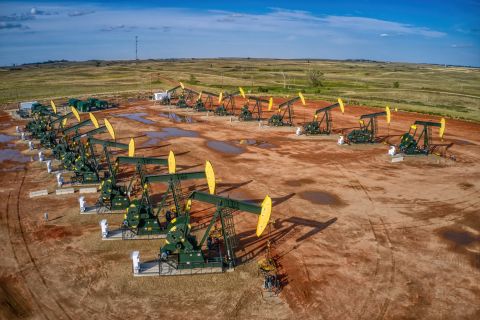Shale oil activity in China has had limited success so far and is likely to remain restricted to certain regions in the short term. Coalbed methane (CBM) activity, however, is developing relatively consistently and looks set to continue its steady growth.
But when it comes to the lure of China’s shale gas reserves, the potential is obvious. Reserves are estimated at 36.12 Tcm (1,275 Tcf) by the US Energy Information Administration (EIA), making them the world’s largest potential single source of shale gas.
Unsurprisingly, the Beijing government is keen to focus on this sector as it looks to replicate the shale boom in the US. The country faces many challenges before it can achieve similar success, including those relating to topography, finance, technology, geology, water supply, infrastructure, and government administration.
Also, the government did little to help its image when announcing earlier this year it had awarded the majority of blocks in its second shale licensing round to domestic bidders, of which most were obscure utility players or government investment bodies with little or no direct experience in the oil and gas industry.
It is believed that of all companies holding shale exploration blocks from China’s first and second licensing rounds, there have been less than 150 wells drilled, with commercial production negligible.
This has cast serious doubts over a seemingly impossible government target of 6.5 Bcm (229.5 Tcf) per year of shale gas production by 2015.
Sichuan leads the way
Some headway is being made. Shell and state-owned partner China National Petroleum Corp. (CNPC) recently gave Beijing hope of significant future production when they started hydraulic fracturing operations in Sichuan province in southwest China.
In March China approved a production-sharing contract with Shell for the Fushun-Yongchuan block. Shell immediately pledged to spend US $1 billion a year on China’s shale sector as part of the company’s goal to increase global output to 4 MMboe/d by the 2017/2018 period, up from current levels of 3.3 MMboe/d.
Shell CEO Peter Voser said that the partners have a “significant drilling season” planned for 2013 and 2014. Shell and CNPC began drilling in Sichuan in August this year.
In addition to Shell, two US operators have teamed up with state players. Chevron has set up a joint venture with CNPC and also is drilling exploration wells in Sichuan, while ConocoPhillips has teamed up with Sinopec, with the pair to drill wells in the same province before year-end 2013.
However, despite Shell and the others pushing ahead with these initial programs, many international players have expressed concerns that Beijing has not yet established the required regulatory framework to properly develop its shale gas reserves.
The technology and knowhow possessed by foreign companies is vital to the future of the shale gas industry in China – with most of this knowhow developed to help the US enjoy huge success in its own sector.
Obstacles to shale gas growth
China’s most promising shale gas deposits lie in three large basins: the Tarim basin in the northwest, the Ordos basin in north-central China (including Inner Mongolia), and the Sichuan basin in the southwest.
Challenges include not only the complex geology in many Chinese basins but also the depth of the shale horizons. The shale deposits can be anywhere from 2,438 m to 6,400 m (8,000 ft to 21,000 ft) below the surface, and fracturing is needed to access the gas.
The large number of wells required in fracturing and the depth of each well often equate to high costs. If the plays had sufficient reserves, high costs would not be a problem on their own. But take into account that fracturing requires an awful lot of water, and another large potential barrier comes into play.
China already has a significant ongoing water shortage and, given that many of the country’s shale gas plays lie in mountainous or desert regions (both with a severe lack of water or access to water), the obstacles begin to stack up.
The country’s gas pipeline system also needs to grow to be able to cope with both the remote topography and the extra capacity that will be required if shale gas does start to be produced in large volumes.
These barriers pose a serious challenge to any operators studying the opportunities in China. The most interest comes from major companies with the capacity to deal with such challenges, including Shell, Chevron, and ConocoPhillips. But on top of this there also are the issues of dealing with government authorities and the country’s current licensing system that has failed to trigger much in the way of unconventional exploration activity even on a modest scale.
Licensing lull
Beijing’s decision to award shale blocks to domestic utilities and local government investment funds in the second licensing round has backfired as progress has so far been painfully slow.
In January, 19 exploration blocks were awarded to 16 Chinese companies in an attempt to introduce broader competition within an industry that has been dominated by a handful of large state-owned companies. The 16 winners committed in their bids to spend a total of at least $2 billion over the next three years.
However, a report by China’s Ministry of Land and Resources (MLR) said that after six months most of the 16 companies have at best just started with initial seismic work due to lack of knowledge of the industry or poor funding.
“For those who do not put in exploration work or even in an extreme case are using the acreage as an excuse for fundraising, we will reduce the size of their blocks or even revoke them,” a spokesman for the MLR said.
As a result of this slow progress, a planned third round for shale gas blocks is likely to be delayed until the end of this year or into 2014.
Shale oil potential
In terms of shale oil, recent assessments have focused on the lacustrine black shales of east China’s sedimentary basins. These make economic sense since this area has a dense population and is home to most of the country’s economic activity.
China has an estimated 300 Bbbl of recoverable shale oil reserves, and the average production costs could be around $50/bbl, according to Chengzao Jia of PetroChina’s Research Institution of Petroleum Exploration and Development.
Tight oil mainly occurs in the lake basin deposit system in the Meso-Cenozoic and has already been economically produced in the Changqing oil field in the Ordos basin.
Zhijun Jin of the Sinopec Research Institute of Petroleum E&P said that state-owned companies have “drilled hundreds of thousands of wells during the past 55 years,” adding that there are excellent existing data to help find new reserves. The shales in the region are described as being rich in natural fractures with over-pressured locations. Thickness has been measured from 30 m to 100 m (99 ft to 328 ft). In total, eight favorable shale oil exploration plays have been identified in eastern China alone, he added.
CBM success
The more advanced activity within the CBM sector means that China currently has several such projects under way, with the sector growing slowly but steadily.
China’s National Energy Administration (NEA) said last year that the government would focus its CBM developmental efforts on the Qinshui and Ordos basins in particular. Production capacity of CBM in the Qinshui and Eastern Ordos basins should reach an estimated 16 Bcm (564.8 Bcf) per year by 2015, according to the NEA.
The Ordos basin currently accounts for more than 30% of China’s domestic gas production and holds large reserves of petroleum, conventional natural gas, and CBM. The NEA is keen to keep developing the basin because of its competitive well costs as well as its large resource potential and high recoverability.
Guanghua Liu of China’s AAA Minerals International Co. said he believes that China would make great progress in CBM development if more attention was paid to “investigating biogenic methane-dominated lignite and sub-bituminous coal basins and mining areas and more efforts were made on studies of the local geology and on using more effective drilling, stimulating, and draining techniques for the unique characteristics of the target areas.”
He added that the 50 coal-bearing basins in China have the potential to hold a total of around 36 Tcm (1,271 Tcf) of CBM, making the sector highly attractive to potential investors given the right administration and fiscal terms.
China’s shale gas lags far behind CBM, tight gas development
Technically recoverable reserves of tight gas, CBM, and shale gas are estimated at 34 Tcm (1,200 Tcf). Shale gas development remains in the preliminary stage.
By Scott Weeden, Senior Editor, Drilling
China continues to see a bright future for unconventional gas development with its recoverable reserves of unconventional gas estimated to be double conventional gas reserves. However, shale gas production in 2012 was slightly more than 1% of the 44.55 Bcm (157 Tcf) of total unconventional gas produced.
“What is needed for promoting China’s unconventional gas industry includes continuous discoveries, pipeline network and infrastructure construction, favorable policies on development and pricing, and optimization in natural gas consuming structure,” Zhou Zhibin, vice chairman of Sichuan Enterprise Association, said during Hart Energy’s DUG Australia conference on Aug. 29 in Brisbane, Queensland, Australia.
Gas production from tight sands in China reached 32 Bcm (1.13 Tcf), while coalbed methane (CBM) production in 2012 was 12.5 Bcm (441 Bcf).
There are two main tight gas areas in China: the Sulige gas field in the Erdos basin and the Sichuan basin. By year-end 2012, more than 25% of the total natural gas produced in China was from development of tight gas sands, Zhibin continued. Recoverable reserves are in the range of 9 Tcm to 12 Tcm (317 Tcf to 423 Tcf).
In China there are 45 coal-forming basins with recoverable reserves estimated at 10.87 Tcm (384 Tcf). There have been 13,580 CBM wells drilled in the country.
The marine shale gas reserves are estimated at 21 Tcm (742 Tcf) and are found in three main areas: Paleozoic erathem shale in southern China, with 12 Tcm; Lower Paleozoic erathem shale in northern China, with 4 Tcm (141 Tcf); and Cambrian and Ordovician shale in the Tarim basin in western China, with 5 Tcm (282 Tcf), Zhibin explained.
Challenges facing unconventional development
Currently, companies must seek favorable government policies for exploration and development of tight gas. The major problem is a restricted range of development strategies and long-term plans.
For CBM, the current financial policies include value-added tax (VAT) refunds, exemptions and deductions, and central government and local subsidies. The ex-factory price for civil use of CBM can be determined by the supplier and purchaser. The government requires payment for exploration rights and encourages cooperation. However, mining rights are unclear, there is limited utilization, and exhaust emissions adversely affect the environment, he said.
Shale gas development, though, faces additional obstacles. Although the government is pushing shale gas, a comprehensive system with support policies has yet to be formed, Zhibin said.
Zhibin listed several suggestions for unconventional gas policies and regulations. For tight gas, CBM, and shale gas, relief from customs for key exploration and development equipment would be useful.
Industry regulations on mining rights and environmental protection standards are needed for CBM along with incentives. For shale gas, refund policies for VAT, a resource tax rate of less than 2%, and approval for land use would benefit development.
Finance and taxation policies for tight gas could be amended to increase deduction terms, provide differential tax rates, provide resource tax relief, lower expenses on exploration and mining rights, and offer subsidies for shale gas development, Zhibin said.
China also is proposing development of natural gas spot markets. Diversified modes of natural gas trading would promote the emergence of a futures market after the spot markets have matured, he continued.
Recommended Reading
ONEOK CEO: ‘Huge Competitive Advantage’ to Upping Permian NGL Capacity
2024-03-27 - ONEOK is getting deeper into refined products and adding new crude pipelines through an $18.8 billion acquisition of Magellan Midstream. But the Tulsa company aims to capitalize on NGL output growth with expansion projects in the Permian and Rockies.
Sitio Royalties Dives Deeper in D-J with $150MM Acquisition
2024-02-29 - Sitio Royalties is deepening its roots in the D-J Basin with a $150 million acquisition—citing regulatory certainty over future development activity in Colorado.
Dallas Fed Energy Survey: Permian Basin Breakeven Costs Moving Up
2024-03-28 - Breakeven costs in America’s hottest oil play continue to rise, but crude producers are still making money, according to the first-quarter Dallas Fed Energy Survey. The situation is more dire for natural gas producers.
Analysts: Diamondback-Endeavor Deal Creates New Permian Super Independent
2024-02-12 - The tie-up between Diamondback Energy and Endeavor Energy—two of the Permian’s top oil producers—is expected to create a new “super-independent” E&P with a market value north of $50 billion.
Is Grayson Mill the Next Bakken Domino to Fall After Chevron-Hess?
2024-01-31 - As E&Ps look to bulk up outside of the Permian Basin, EnCap-backed Bakken player Grayson Mill Energy is reportedly exploring a sale valued around $5 billion.





